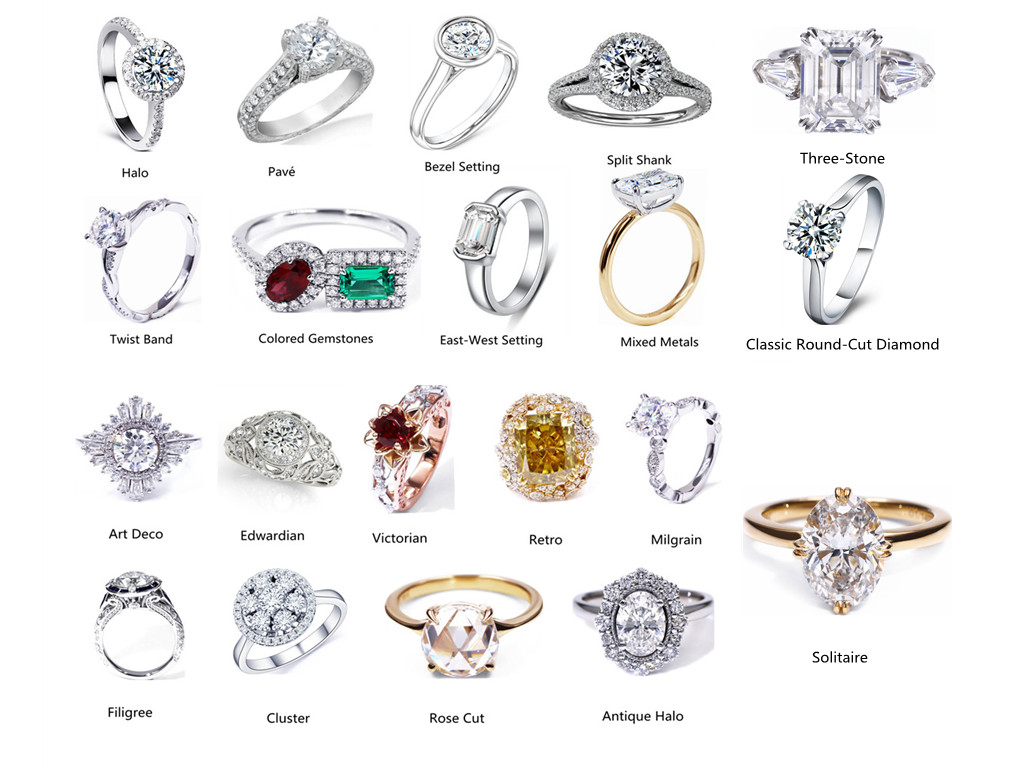4 Simple Techniques For Engagement Rings
4 Simple Techniques For Engagement Rings
Blog Article
The Basic Principles Of Engagement Rings
Table of ContentsSome Known Facts About Engagement Rings.Unknown Facts About Engagement RingsSee This Report about Engagement RingsThe Ultimate Guide To Engagement RingsEverything about Engagement RingsGetting My Engagement Rings To Work
Tension-style setups also supply better protection for the gems. The majority of tension-style setups are made for round fantastic diamonds or other round gems, but they can be modified to fit several various other forms. The setting can also be changed to have accent treasures around the centre stone or to permit a side stone on each side of the centre rock.Develops an optical illusion of the centre gems hanging in the air. If it has prongs, they can end up being loose with wear. This is conveniently fixed by having the ring regularly cleansed and inspected by a jeweler.
3 Simple Techniques For Engagement Rings
The initial ring with a true tension setup was made in Vreden, Germany in the 1970s. Ursula Exner and well-known carver Walter Wittek interacted to layout and make this first ring. In the adhering to years, other jewelers developed their very own tension settings, along with the more safe and practical tension-style settings.

This offers the ring a basic, however stylish elegance that functions well for both men and females's wedding celebration rings, in addition to engagement rings. The flush setup is occasionally likewise called a gypsy setting. We can not say for certain exactly how it came to have that name, but maybe it is since the setup represents a free spirit.
More About Engagement Rings
Flush settings function well for round, square or rectangle-shaped gems, but they can be hard to adjust to particular expensive cuts, for example, a heart-shaped ruby. Maintains the gems secure and secure.
Reminds the owner to grow a totally free spirit (engagement rings). Considering that the treasures are embeded in the shank, they receive a limited quantity of light and generate less radiance. Commonly not practical for heart-shaped treasures and a couple of other gems with fancy cuts. Rings with flush or gypsy settings have been around because the late 1800s.
Jewelry interaction rings have only one centre gems on an ordinary band. Numerous other involvement rings, however, also have accent gems.
The smart Trick of Engagement Rings That Nobody is Talking About
There are 4 settings that are extensively used to hold accent gems. The castle setting made its name because from the side it resembles the battlements on top of a castle wall surface. This setting is likewise regularly called the scallop setting. Castle setups are made directly on the shank of the ring.
The prongs in a castle setup can be directly and down with basic rounded ideas or they can be reduced at an angle to ensure that they appear like fishtails. These fishtail prongs can also be called French cut prongs. Castle settings are really versatile. They can be set entirely around the shank, simply placed throughout the ring's shoulders or made use of to create a halo around the centre gemstone.
The Buzz on Engagement Rings
If it is well made, the reduced scalloped edge of the castle setup can also create an optical impression. It enables the sides of the gemstones to be easily seen and produces the impact that the gems are being held in an unnoticeable setting.
Boosts light refraction and luster. Catches attention with its find here sparkles. Develops the illusion of an unseen setup. Has an elegant charm. Easy to clean and requires little maintenance. The small prongs can come to be loosened. We recommend that rings with the castle setting be cleansed periodically by a jeweller, to ensure that the prongs can be inspected.
The prongs on a castle setting can capture on clothing, however this is rare due to the fact that the prongs are smooth. The castle setting can be utilized to make gorgeous endless time rings.

The Engagement Rings Statements
The grain setting is a very secure you can check here setup. The sides of the channel safeguard the accent gems from bumps and scrapes and the handmade prongs hardly ever come to be loosened. One disadvantage of the grain setting is that the gemstones receive much less light because they are put down in the network. This results in the gems generating slightly less brilliance and shimmer.
Every treasure in the grain setup is bordered by 4 shiny beads that are level with the top of the shank. These beads catch the light and emit their very own glimmers in every instructions. The grains' glimmers with each other with the luster and glows created by the accent treasures bring the bead setting to life and give it continuous glimmers.
They can utilize it to make endless time rings, in addition to to embellish the easy shank or more intricate split shank that some involvement rings have. In the standard grain setting, the accent gems are embeded in one straight line. Periodically, however, jewellers will raise the shimmer on an interaction ring by including two or go even more identical lines of grain collection treasures.
Report this page